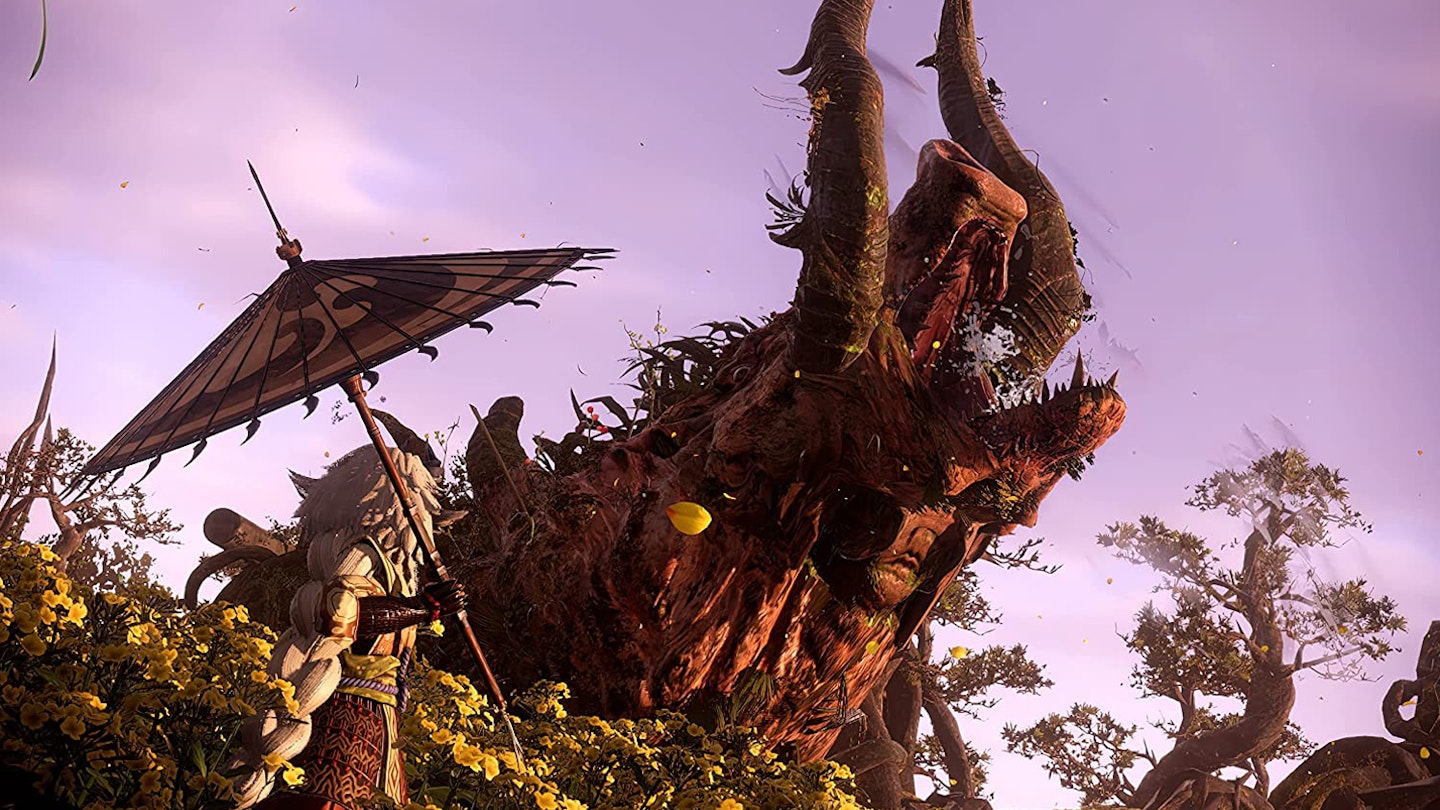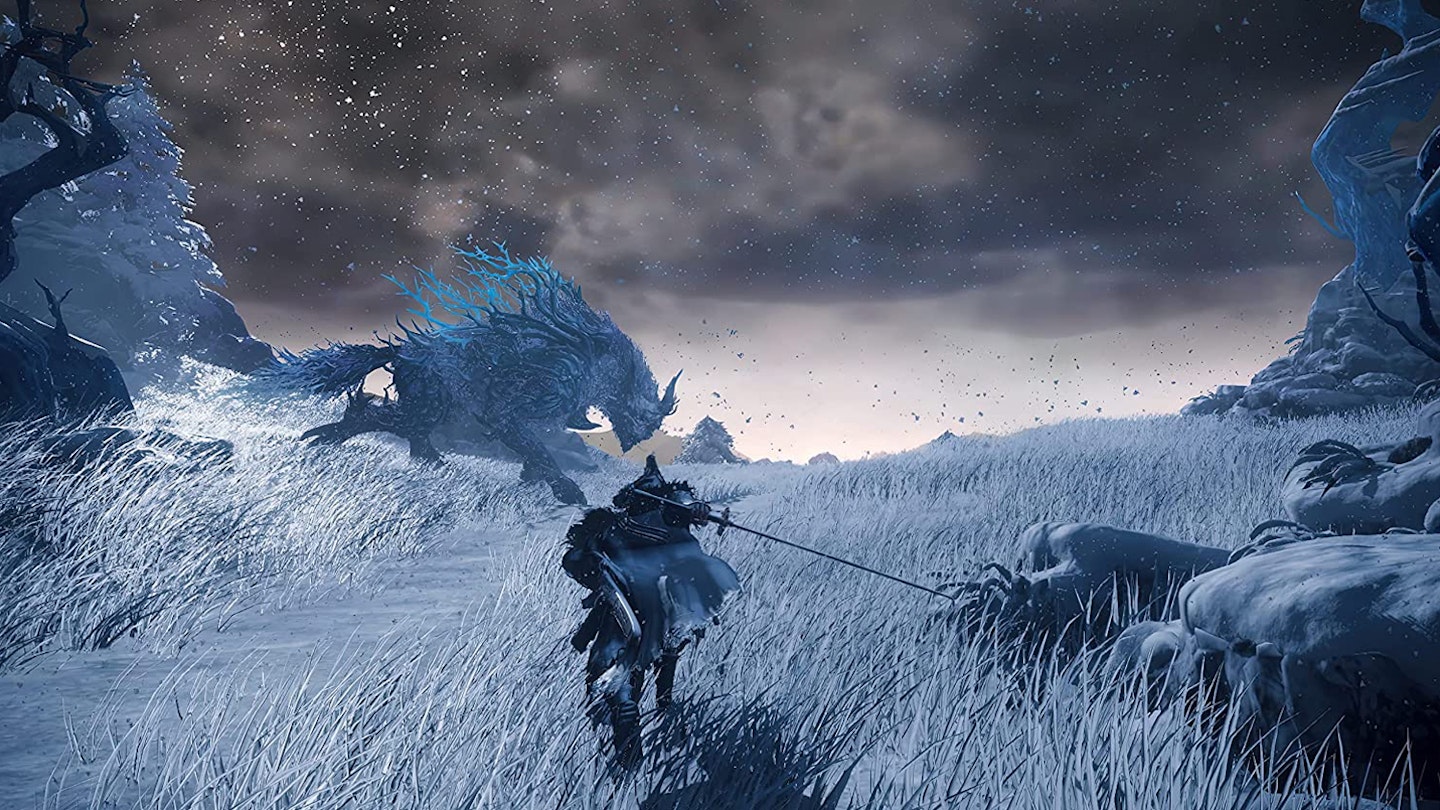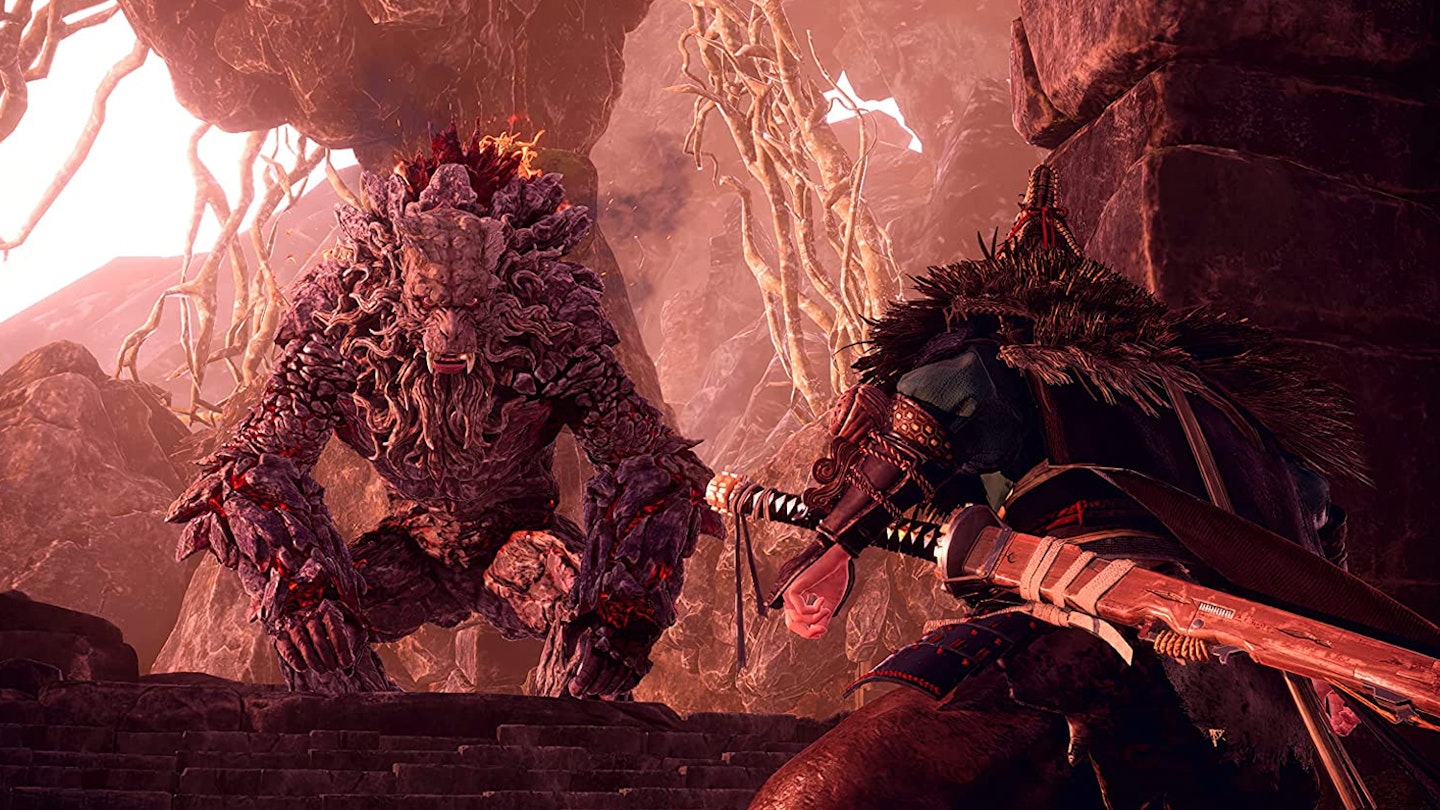Platforms: PS5, Xbox Series X, PC
Wild Hearts may be one of the strangest collaborations in gaming history. Western publisher EA is better known for its raft of sports and shooter titles, while Japanese developer Omega Force is the studio behind the Warriors franchise of identical-to-outsiders hack-and-slash outings. Yet the result of this unlikely partnership is nothing like either parent’s usual offerings.

Instead, it’s an elaborate fantasy hunting game, one clearly – some might say unashamedly – drawing on the likes of Monster Hunter. Unlike Capcom’s long-running franchise though, Wild Hearts feels more accessible from the off, leaning more into action and JRPG territory to draw players in, rather than leading with detailed rules and granular progression.
Players start off as a nameless hunter, wandering through Azuma, a gorgeously realised world evocative of feudal Japan. Before you’ve so much as glanced at a character creator, you’ll be slashing through a few of the low-level monsters, known as Kemono, that are plaguing the land. Even in its earliest form, combat in Wild Hearts feels nimble and breezy, with a variety of strikes and dash attacks to tackle enemies, a holdover from Omega Force’s fluid systems in other games. While initially equipped with a conventional sword, later weapons open up the combat system further, with tradeoffs of speed versus power or range to consider, tailoring gameplay to personal taste. Combat controls may take a bit of getting used to, with some attacks mapped Souls-style to shoulder triggers but others on the face buttons, but once you’ve got the physical memory locked down, it’s a delight.
The character creator is one of the best around. After an early encounter with a mysterious monk, you’ll be able to define your hunter to your precise liking, with dozens of facial and body types, diverse ethnicities, voices, and even pronoun choices to play around with. It’s arguably a bit too detailed in places – hair styles have two incredibly similar customisation tabs with very vague differences, for instance – but it’s a real delight for players who want to create their ideal in-game avatar.
Most interesting are the Kemono you'll be hunting – arguably the real stars of Wild Hearts.
What really differentiates Wild Hearts from Monster Hunter,though, is its elaborate tool system. Dubbed Karakuri, these are various machines you can craft on the fly to aid in hunting and battling the Kemono. The first you’ll encounter is a simple block, but even that has multiple uses – ersatz barriers to avoid enemy attacks, elevation to reach higher ledges, or even platforms to launch yourself off to deliver crushing downward blows. Later Karakuri are increasingly inventive, and can even be combined to create more elaborate contraptions, while some have uses out of battle, such as building tents that serve as fast travel points.
Cleverly, these objects aren’t infinitely reproducible – building each one uses a resource called Karakuri Thread, which is common enough that you’re rarely left unable to progress but scarce enough that you’re not conjuring constructs out of the ether like a feudal-era Green Lantern. There’s always just enough of a considered decision over what and when to deploy a Karakuri in battle, or which shortcut or custom base camp to build in the four hunting areas that make up Wild Hearts’ world, to keep things interesting. You’ll also be limited to four equipped Karakuri at any time, adding a bit more of a tactical approach. Experimenting with loadouts to find the perfect approach for a hunt is one of the best elements of the game.

Most interesting are the very Kemono you’ll be hunting. Arguably the real stars of Wild Hearts, every single one is meticulously designed, from random grunts to the most colossal beasts. Even the first ‘proper’ Kemono you’ll hunt down – a giant rat creature that’s as much tree as it is mammal – impresses, its plant-like attributes expanding and erupting over the course of the battle to beautiful if disturbing effect. Later creatures only up the ante, from the bear-sized Gritdog, to the intimidating Lavaback ape, or the titanic Kingtusk, an enormous wild boar with tusks the size of tree trunks. Perhaps fittingly, there’s a touch of Studio Ghibli’s work to be found in the monster designs, particularly the opening scenes of Princess Mononoke. Pleasantly though, you’re also not a relentlessly murderous hunter – there are moments where you can pet, rather than kill, your quarry, while herbivores wandering the environment can be left to their own peaceful devices.
There are still many of the trappings of Monster Hunter to be found though, from the loop of harvesting monster gizzards and environmental resources to craft or improve gear, to the central hubs and villagers to interact with between hunts. Conversely, Wild Hearts’ main hunts lack the level of complexity that Capcom’s established series does – while you’ll often have to chase Kemono through various stages of a battle, it’s largely down to how much damage you’ve inflicted as to when they’ll move on, and their behaviour is far more predictable throughout. There’s also a lack of variety in the monsters, with colour and elemental variations making the line-up seem beefier than it is – perhaps the downside to each base model being so intricately designed.
Yet for everything Wild Hearts retains from its obvious inspiration, it discards or improves others – gone are repetitive tasks such as sharpening weapons or juggling item inventories, and the experience is better for the absence of such busywork. The result is a game that feels more immediate and engaging, allowing players to dive into thrilling hunts and better explore stunning environments rather than spending time on in-game chores.
In such a thinly populated field as “fantasy hunting adventures”, contrasts to Monster Hunter are clearly unavoidable. What makes Wild Hearts really stand out is how it complements, rather than copies, the template. It’s as easy to recommend this to players who want a fresh approach to the genre as it is to those put off by the repetitive nature of Capcom’s defining take. That should be cause for concern for Capcom – while Wild Hearts won’t dethrone its spiritual predecessor straight away, there’s enough potential here that future instalments might yet become king of this particular jungle.
